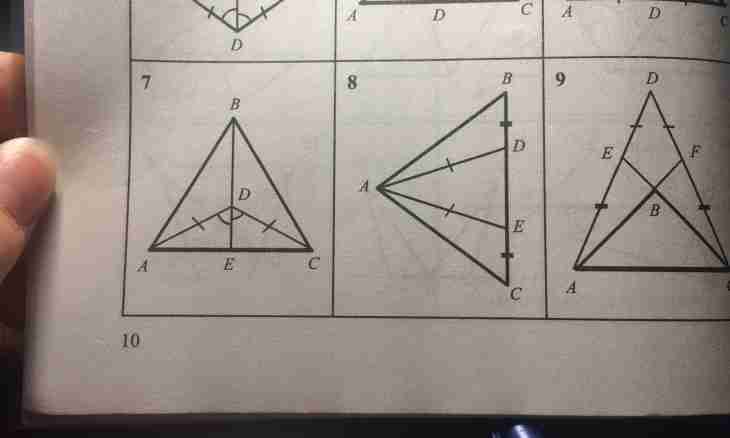The triangle is a geometrical figure which has the number of the parties, minimum possible for polygons, and tops and therefore is the simplest figure at which there are corners. It is possible to tell that it is the most "deserved" polygon in the history of mathematics - it was used for removal of a large number of trigonometrical functions and theorems. And among these elementary figures is simpler and less. The isosceles triangle consisting of identical sides and the basis concerns the first.
Instruction
1. It is possible to find length of the basis of such triangle on sides without additional parameters only if they are set by the coordinates in a two- or three-dimensional system. For example, let three-dimensional coordinates of points of A (X ₁, Y ₁, Z ₁), B (X ₂, Y ₂, Z ₂) and C (X ₃, Y ₃, Z ₃) are given between which pieces form sides. Then also coordinates of the third party (basis) are known to you - it is formed by AC piece. For calculation of its length find a difference between coordinates of points along each axis, square the received values and put, and take a square root from result: AC = √ ((X -X ₁)² + (Y -Y ₁)² + (Z -Z ₁)²).
2. If only length of each of sides (a) is known, then for calculation of length of the basis (b) additional information - for example, corner size between them is necessary (γ). In this case it is possible to use the theorem of cosines from which follows that length of the party of a triangle (not necessarily isosceles) is equal to a square root from the sum of squares of lengths of two other parties from which the doubled work of their lengths on a cosine of the angle between them is subtracted. As in an isosceles triangle of length of the involved a to a formula of the parties are identical, it can be simplified: b = a * √ (2 * (1-cos(γ))).
3. At the same basic data (length of sides is equal to a, the corner between them is equal γ) it is possible to use also the theorem of sine. For this purpose find the doubled work of the known length of the party on a sine of a half of the corner lying opposite to the triangle basis: b = 2*a*sin(γ/2).
4. If except lengths of sides (a) the corner size (α), adjacent to the basis is given, then it is possible to apply the theorem of projections: length of the party is equal to the sum of works of two other parties on a cosine of the angle which each of them forms with this party. As in an isosceles triangle these parties, as well as the involved corners, have identical size, it is possible to write down a formula so: b = 2*a*cos(α).

